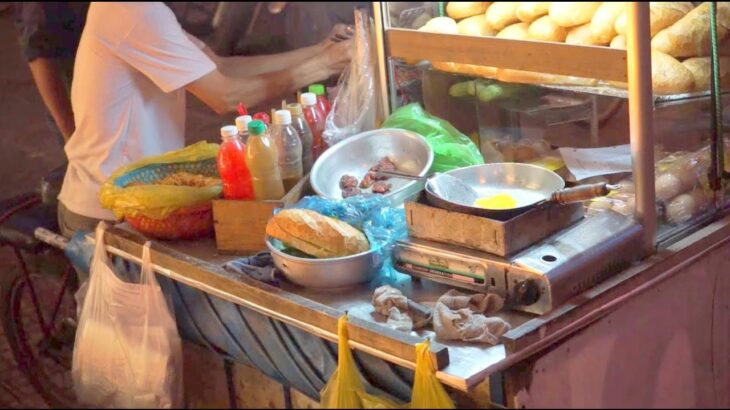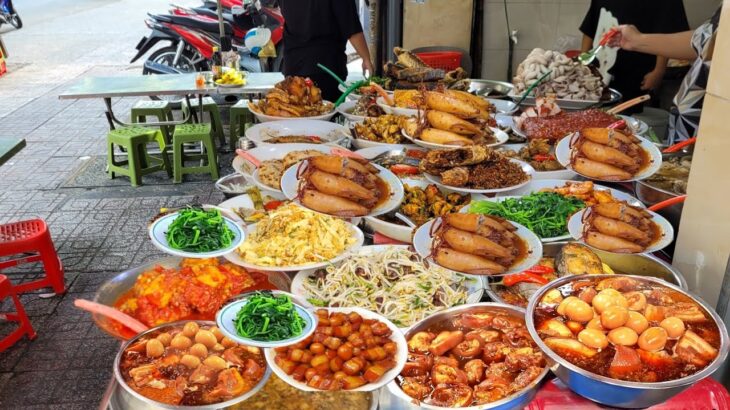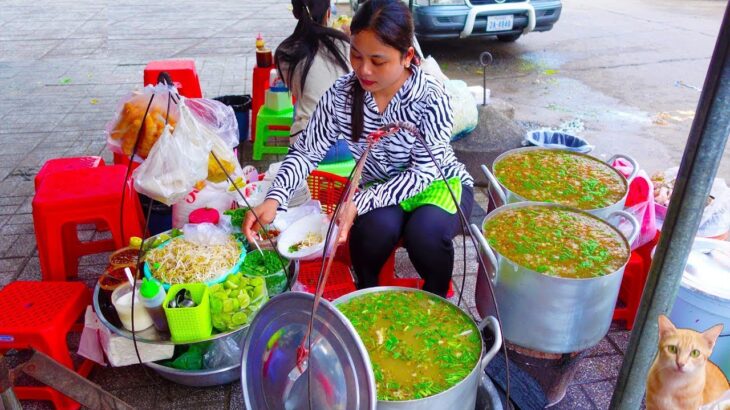Vietnamese Street Food French Baguette & Fried Egg – Bánh mì
The Vietnamese sandwich, sometimes called a “bánh mì” sandwich, is a product of French colonialism in Indochina, combining ingredients from the French (baguettes, pâté and mayonnaise) with native Vietnamese ingredients, such as cilantro, fish sauce, and pickled carrots.[7]
The classic version, bánh mì thịt nguội, sometimes known as bánh mì đặc biệt or “special combo”, is made with various Vietnamese cold cuts, such as sliced pork or pork bellies, chả lụa (pork sausage), and head cheese, along with the liver pâté and vegetables.[8]
Some restaurants also offer bánh mì chay, a vegetarian option, made with tofu or seitan. In Vietnam, vegetarian sandwiches are rarely found on the streets. They are usually made at Buddhist temples during special religious events.
Another option is the breakfast bánh mì, either with scrambled eggs served in a baguette. The version eaten more widely for breakfast in Vietnam is eggs fried sunny-side-up with onions, sprinkled with soy sauce or Maggi sauce, served on a fresh (and sometimes buttered) baguette.
An ice cream sandwich called bánh mì kẹp kem is commonly sold on the street as a snack. It consists of scoops of ice cream stuffed inside a bánh mì, topped with crushed peanuts.[9]
http://en.wikipedia.org/wiki/B%C3%A1nh_m%C3%AC
http://www.themalaymailonline.com/eat-drink/article/the-banh-mi-has-french-roots-and-full-on-vietnamese-flavours…-youll-love
2014 – Saigon / Ho Chi Minh City – Vietnam
https://goo.gl/maps/Hiagd
Follow me on Twitter
Tweets by SeMeyer888
Street food is ready-to-eat food or drink sold in a street or other public place, such as a market or fair, by a hawker or vendor, often from a portable stall.[1] While some street foods are regional, many are not, having spread beyond their region of origin. Most street foods are also classed as both finger food and fast food, and are cheaper on average than restaurant meals. According to a 2007 study from the Food and Agriculture Organization, 2.5 billion people eat street food every day.[2]
Today, people may purchase street food for a number of reasons, such as to obtain reasonably priced and flavorful food in a sociable setting, to experience ethnic cuisines and also for nostalgia.[3] Historically, in places such as ancient Rome, street food was purchased because the urban poor did not have kitchens in their homes.
Despite concerns about contamination at street food vendors, the incidence of such is low with multiple studies showing rates comparable to restaurants.[37]
As early as the 14th century, government officials oversaw street food vendor activities.[10]
With the increasing pace of globalization and tourism, the safety of street food has become one of the major concerns of public health, and a focus for governments and scientists to raise public awarenesses.[38][39][40][41] In the United Kingdom, the FSA provides comprehensive guidances of food safety for the vendors, traders and retailers of the street food sector.[42] Other effective ways of enhancing the safety of street foods are through mystery shopping programs, through training and rewarding programs to vendors, through regulatory governing and membership management programs, or through technical testing programs.[43][44][45][46][47] In 2002 a sampling of 511 street foods in Ghana by the World Health Organization showed that most had microbial counts within the accepted limits,[48] and a different sampling of 15 street foods in Calcutta showed that they were “nutritionally well balanced”, providing roughly 200Kcal of energy per rupee of cost.[49]
In the late 1990s the United Nations and other organizations began to recognize that street vendors had been an underutilized method of delivering fortified foods to populations and in 2007, the UN Food and Agriculture Organization recommended considering methods of adding nutrients and supplements to street foods that are commonly consumed by the particular culture.
http://en.wikipedia.org/wiki/Street_food






